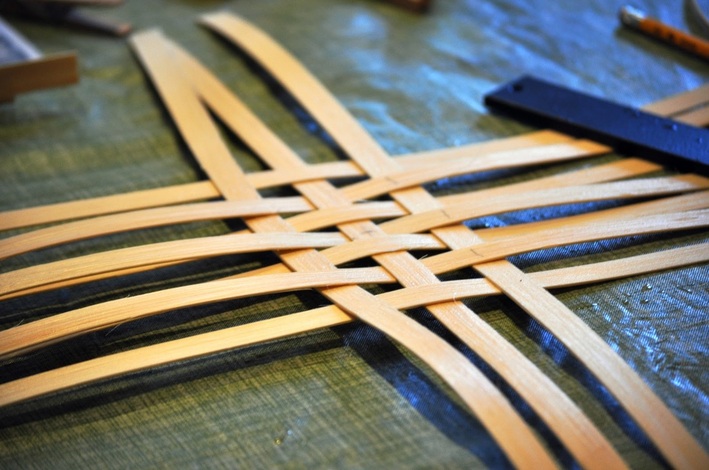
If you are just starting out in the very satisfying and peaceful craft of basket making, you may not be familiar yet with some of the weaving terms that you read in books. This article is designed to assist you learn some of the basic weaving terms quickly and the utility of each technique.
1 Start by understanding some basic terms:
· Weaver - these are the basket strands that weave through the spokes; they are lighter, thinner and more flexible than the spokes, to enable them to be woven in and out;
· Spoke - these are the strands that stand upright and form the side supports of the basket; they are much stiffer than the weavers and are strong.
2 Be familiar with under-and-over-weaving.
This is the most commonly used technique. It is also the simplest. The illustration indicates its form.
1 Start by understanding some basic terms:
· Weaver - these are the basket strands that weave through the spokes; they are lighter, thinner and more flexible than the spokes, to enable them to be woven in and out;
· Spoke - these are the strands that stand upright and form the side supports of the basket; they are much stiffer than the weavers and are strong.
2 Be familiar with under-and-over-weaving.
This is the most commonly used technique. It is also the simplest. The illustration indicates its form.
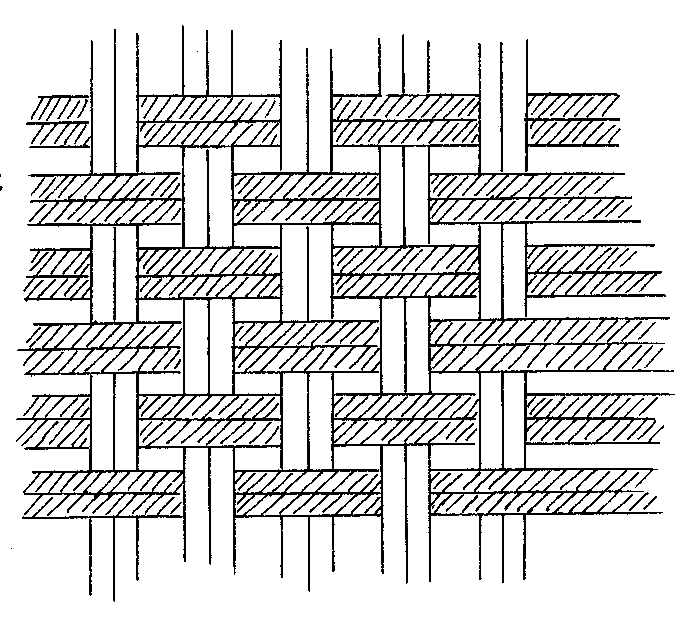
3 Note that double weaving is the same form but two weavers are used at once.
This is an effective weave on large surfaces, and in bands or patterns of the same or a contrasting color on plain rattan baskets.
This is an effective weave on large surfaces, and in bands or patterns of the same or a contrasting color on plain rattan baskets.
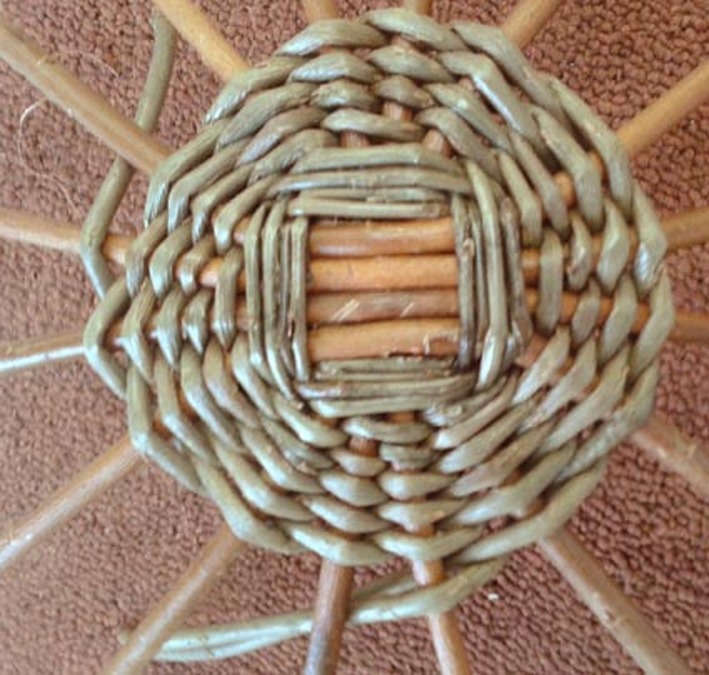
4 Note that pairing may be used with an odd or even number of spokes.
Two weavers are started behind two succeeding spokes, and crossed between them, so that what was the under weaver becomes the upper weaver each time.
Two weavers are started behind two succeeding spokes, and crossed between them, so that what was the under weaver becomes the upper weaver each time.
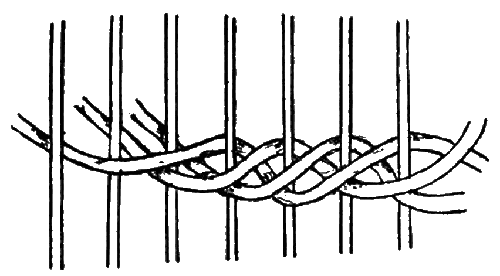
5 Identify the triple twist.
Here, three weavers are placed behind three consecutive spokes, starting with the back one, over two and under one spoke, each on its way to the back of the third spoke being laid over the other two weavers. In turning up the sides of large baskets where separate spokes or additional spokes have been inserted, or as a strong top for scrap baskets, this weave is invaluable.
Here, three weavers are placed behind three consecutive spokes, starting with the back one, over two and under one spoke, each on its way to the back of the third spoke being laid over the other two weavers. In turning up the sides of large baskets where separate spokes or additional spokes have been inserted, or as a strong top for scrap baskets, this weave is invaluable.
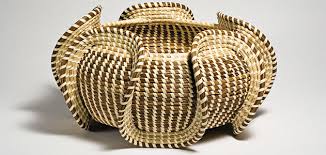
 RSS Feed
RSS Feed
